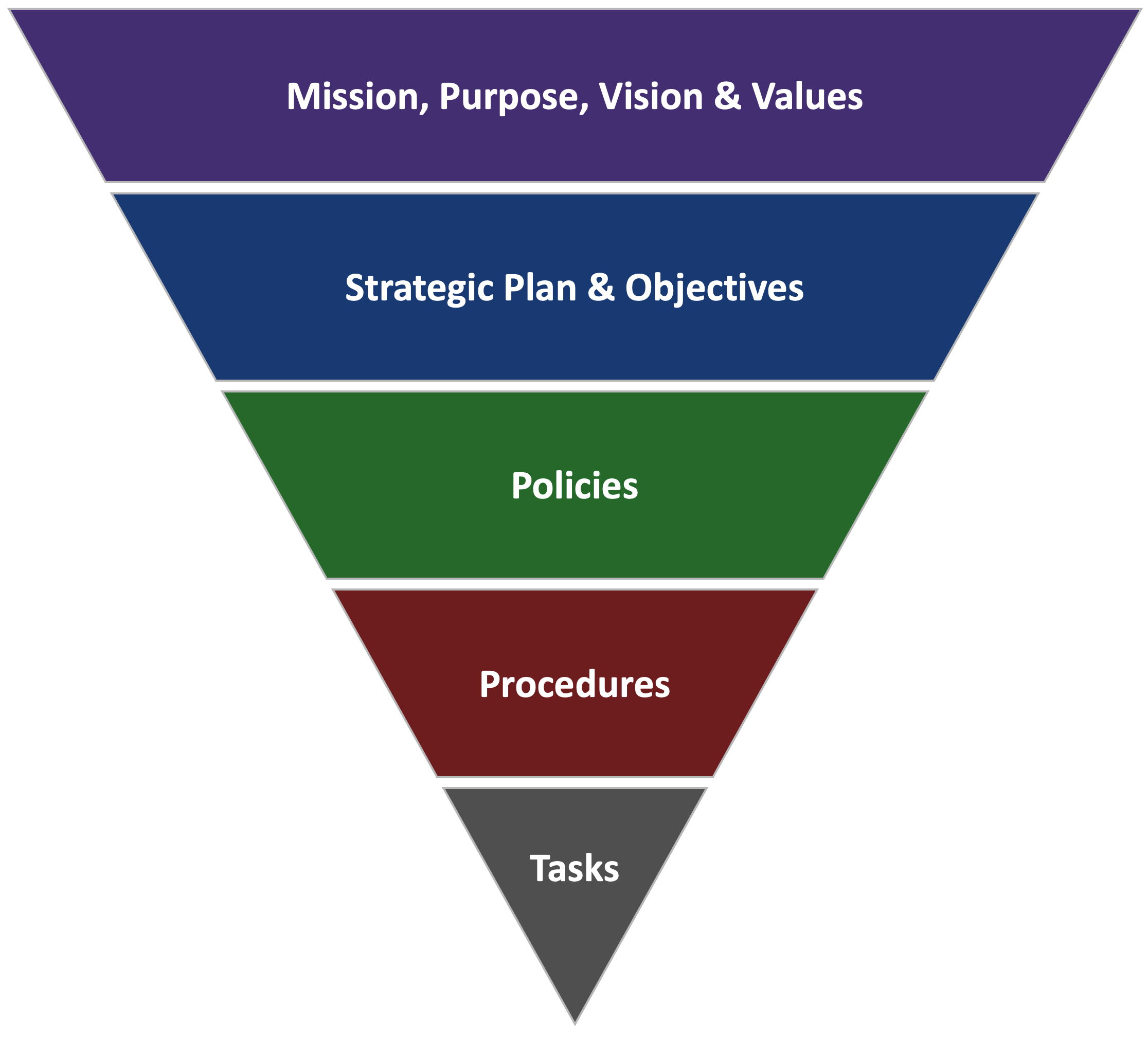
How Policies Interact with Mission, Objectives, & Procedures
Policies play a vital role within the University's governance and compliance programs. They translate the organization's mission, values, and strategic objectives to provide guidance in development of procedures. Imagine an upside-down pyramid. The broadest expression of guidance is at the top, in the form of the University's Mission, Purpose, Vision, and Values. They describe guidance in the widest manner possible. These ideals and statements are then taken into account with the context of the University, in its current time and place, to identify Strategic Objectives which will further the University's missions, in-line with its values. The strategic plan occupies the next layer of the pyramid, and is more definitive than the mission and values of the institution. Strategic objectives are time-bound goals. They are sometimes specific, but also sometimes broadly expressed. In order to translate the objectives into the day-to-day business processes, or procedures, the University needs guidance that is more specific than the objectives, but not so granular that step-by-step, cyclical tasks are defined. The next layer of guidance also needs to take the law into consideration.
Policies are the distillation of everything above them in the hierarchy -- mission, values, and strategic objectives, along with the law. Policies articulate goals that are narrower than strategic objectives and identify limits, or boundaries, for behavior and actions that are necessary to complete those goals. The limits are drawn from University values and laws. Policies will often identify general parties (e.g., divisions, departments, or job titles) responsible for creating, maintaining, executing, and monitoring procedures to complete identified business functions and strategic objectives. Policies do not contain granular procedures unless they are required by law, or necessary to dispel confusion, controversy, or conflict.
Procedures contain instructions and guidelines for accomplishing cyclical, individual tasks. They are the most granular of all documentation supporting business processes, and identify the what (in detail), when, where, and how. The what (generally), who, and why of business processes comes from policies above, and everything that informs them.
Policies v. Procedures
Policies and procedures are most commonly confused. The table below was created to help with understanding the differences between the two.
| Basis for Comparison | Policies | Procedures |
| Nature | The "Why” | The "How” |
| Description | Broad, flexible statements communicating limits, culture, philosophies, and goals which guide organizational decision-making to achieve strategic objectives | Narrowly described instructions for achieving specific cyclical tasks in fulfillment of policies |
| Updates | Infrequently updated through a formal process requiring approval of VP’s and Office of the President | Frequently updated & improved at discretion of division/unit management |

